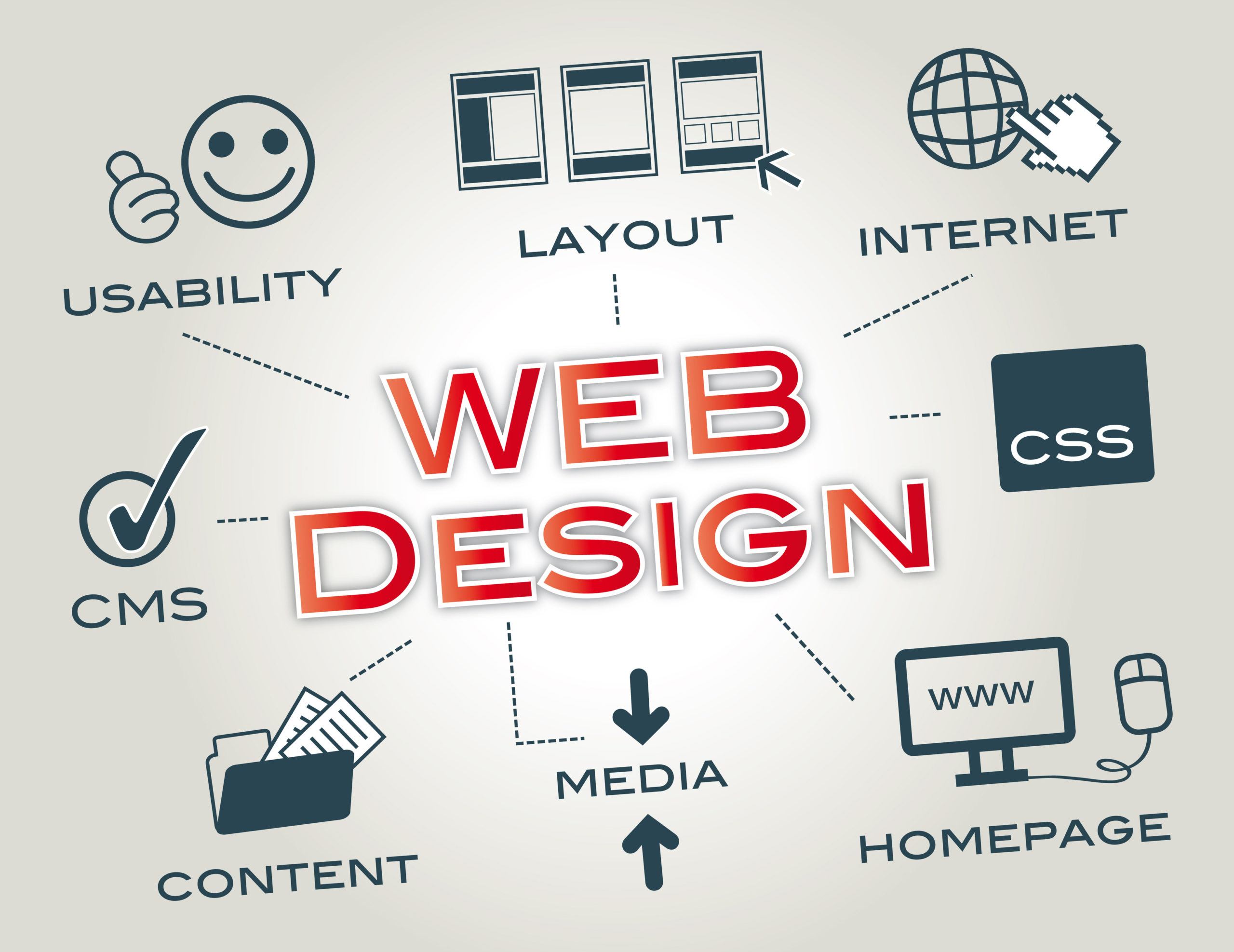The Importance of User Experience in Efficient Web Design Techniques
User experience (UX) acts as a cornerstone in effective web design approaches. It forms how users connect with a site, affecting their satisfaction and chance of returning. A properly designed UX can improve engagement via intuitive navigating and receptive designs. Nevertheless, overlooking these aspects might cause stress and boosted bounce rates. Recognizing the ins and outs of UX is important for designers intending to produce compelling digital experiences that resonate with varied target markets. What variables genuinely drive effective user interaction?
Understanding User Experience and Its Influence On Layout
User experience (UX) is commonly viewed as a mere element of internet design, it basically forms just how customers connect with an internet site. UX includes all facets of the user's interaction, consisting of use, access, and total contentment. A positive UX cultivates engagement, motivating customers to discover the site and return in the future. Conversely, an unfavorable experience can result in frustration, leading to high bounce prices and lost opportunities for conversion.
Design components like navigation, design, and content organization play vital roles in forming this experience. Efficient UX design expects user demands and preferences, making sure that information is conveniently available and visually attractive. In addition, recognizing user actions with analytics can supply useful insights, educating layout choices that improve usability. Ultimately, a complete understanding of UX enables designers to create websites that not just draw in individuals but additionally promote meaningful interactions that align with business goals and user expectations.
Trick Principles of Efficient User Experience
Reliable user experience rests on a number of crucial principles that improve internet site functionality and interaction. Instinctive navigating style, responsive format essentials, and the relevance of aesthetic hierarchy are vital aspects that add to a seamless interaction between individuals and internet material. Recognizing these concepts permits developers to develop even more easily accessible and user-friendly electronic atmospheres.
Instinctive Navigating Layout
Instinctive navigation style offers as a critical portal to their general experience when individuals run into an internet site. Effective navigating enables users to easily find the details they seek, enhancing their interaction with the website. Trick principles consist of clear labeling, sensible organization, and consistent placement of navigation aspects. Labels must be uncomplicated, enabling customers to forecast the web content they will certainly discover. A well-structured hierarchy assists users understand the relationship between various sections, guiding them via the web site flawlessly. In addition, responsive food selections and quickly available links add to a fluid experience across gadgets. By prioritizing user-friendly navigation, developers can greatly minimize user frustration and boost involvement, ultimately cultivating a positive perception of the website and its web content.
Receptive Layout Essentials
A well-structured navigation system normally brings about the need for a responsive design, which is important in today's varied electronic landscape. A receptive design warranties that websites feature perfectly throughout different tools, including smartphones, tablet computers, and desktop computers. This adaptability improves user experience by enabling material to be quickly available and aesthetically systematic, no matter of screen dimension. Key principles of receptive style include fluid grids, flexible photos, and media inquiries, which facilitate ideal watching. Additionally, focusing on touch-friendly elements boosts interaction on mobile phones. By implementing a receptive layout, designers can suit users' requirements, reduce bounce prices, and boost interaction. Eventually, a well-executed responsive style promotes a positive user experience, motivating visitors to explore the web site further.
Visual Power Structure Value
Visual pecking order plays a crucial function in guiding users via an internet site, making certain that vital info captures their focus. By strategically using dimension, spacing, color, and comparison, designers can produce a clear pathway for customers to adhere to. Bigger components often draw the eye, indicating their significance, while contrasting colors can highlight phone call to activity. In addition, constant positioning and group of associated content improve understanding, making navigating instinctive. Efficient usage of aesthetic hierarchy not only improves use however likewise sustains the total visual of the site, fostering a favorable user experience. When customers can conveniently determine the most crucial details, they are extra most likely to engage with the web content, bring about boosted fulfillment and interaction with the website.
The Duty of Functionality in Web Design
Use plays a crucial function in web design, particularly via navigating simpleness and adherence to ease of access requirements. Efficient navigating improves user satisfaction by permitting visitors to locate information swiftly and intuitively. At the same time, conference accessibility criteria assures that all customers, no matter their abilities, can effectively connect with the site.
Navigation Simplicity
Simpleness in navigating stands as a keystone of reliable web design, greatly influencing user experience. A streamlined navigating system permits users to find info promptly and intuitively, minimizing frustration and boosting fulfillment. Clear labeling and sensible framework are important aspects, leading users effortlessly via the web site. Repetitive web links or extremely intricate menus can disorient users, resulting in raised bounce rates. In addition, mobile responsiveness has to be considered, making certain navigating continues to be simple throughout tools. Minimizing and prioritizing vital pages clutter even more sustains user involvement. Effective navigation not only fosters a positive experience yet additionally urges individuals to discover the site better, inevitably resulting in higher conversion prices. In this regard, navigation simplicity offers as a critical aspect in the overall effectiveness of web design strategies.
Accessibility Specifications
User interaction is significantly enhanced when websites abide by access requirements, guaranteeing that all users, no matter of their capabilities, can navigate and interact effectively. Conformity with these requirements not just expands the audience yet likewise enhances overall user complete satisfaction. Accessible style includes features such as message choices for pictures, key-board navigating, and adequate shade contrast, which help with usage by people with handicaps. On top of that, carrying out these standards can positively impact seo (SEARCH ENGINE OPTIMIZATION) by improving site structure and clarity. As web design progresses, prioritizing ease of access comes to be crucial in cultivating an inclusive electronic setting. By welcoming these requirements, developers add to a much more fair web, inevitably driving user commitment and involvement.
Importance of Responsive Layout for User Engagement
As customers increasingly gain access to websites with a variety of gadgets, the significance of responsive design ends up being paramount for engaging individuals successfully. Receptive design guarantees that a web site adjusts flawlessly to different screen dimensions, supplying a perfect viewing experience no matter the gadget made use of. This flexibility boosts user interaction by facilitating easier navigation and interaction with content.
When users experience a web site that is receptive, they are extra most likely to remain much longer, discover additionally, and return in the future. A properly designed receptive format decreases the frustration commonly connected with zooming and scrolling on smaller sized screens, therefore minimizing bounce rates. these details In addition, responsive design can favorably impact internet search engine positions, as search engines prioritize mobile-friendly sites. In today's digital landscape, where mobile usage remains to increase, executing responsive layout is not simply helpful, however vital for preserving user engagement and assuring a favorable experience across all tools.
Enhancing Load Times for Better User Satisfaction

To enhance load times, web designers must focus on optimizing pictures, leveraging web browser caching, and decreasing HTTP requests. Furthermore, utilizing Web content Delivery Networks (CDNs) can expedite content shipment by dispersing it throughout numerous geographical places. Simplifying code, such as pressing CSS and JavaScript files, even more contributes to much faster loading speeds.
Eventually, a dedication to boosting lots times not just boosts user complete satisfaction however additionally reinforces brand name loyalty and enhances the possibility of repeat brows through. A swift, smooth experience is necessary for maintaining individuals and promoting positive communications.
The Impact of Visual Hierarchy on User Communication
Aesthetic hierarchy acts as a crucial component in directing user interaction on an internet site. By arranging content in such a way that prioritizes details aesthetically, designers can influence just how users engage and browse with a website. This hierarchy is developed via different style techniques, consisting of dimension, color, comparison, and spacing. Bigger fonts or vibrant shades draw focus to important components, such as calls to action or headings, while suppressed colors and smaller font styles can indicate subservient details.
Effective aesthetic hierarchy aids users rapidly recognize what is crucial, lowering cognitive tons and boosting usability. It permits intuitive navigating, making it much easier for customers to find what they need without aggravation. As individuals connect with a site, a well-structured aesthetic hierarchy promotes an extra satisfying experience, ultimately causing greater involvement and conversion rates. Developers must prioritize these concepts to create a efficient and user-centered web environment.
Measuring User Experience: Techniques and tools

Often Asked Questions
Exactly How Can I Improve My Internet site's User Experience on a Budget?
To boost an internet site's user experience on a budget, one can enhance page load speed, simplify navigation, execute receptive style, improve material clearness, and gather user feedback for continuous improvements, making sure an enjoyable site visitor experience.
What Prevail User Experience Blunders to Stay Clear Of in Web Design?
Usual user experience mistakes in web design consist of chaotic formats, bad navigation, slow packing times, absence of mobile responsiveness, pop over to this site neglecting access, irregular branding, and falling short to focus on user feedback - Web Design Agency. Each can substantially impede general website performance
Just how Often Should I Update My Internet Site for Better User Experience?
Web sites should be upgraded frequently, ideally every couple of months, to keep excellent user experience. Constant updates aid address use issues, freshen web content, and adjust to changing user needs, guaranteeing the site remains engaging and appropriate.

Can User Experience Effect Search Engine Optimization Rankings on My Web site?
User experience can significantly impact search engine optimization positions, as search engines focus on sites that offer smooth navigation, fast packing times, and appealing web content. A positive user experience can bring about reduced bounce rates and greater search exposure.
What Role Does Availability Play in User Experience Design?
Availability plays an important duty in user experience layout by guaranteeing that all discover this people, no matter capacities, can connect and navigate with a web site properly. This inclusivity enhances overall contentment and engagement among diverse individuals.
User experience (UX) is usually regarded as a mere aspect of web style, it essentially forms exactly how individuals interact with a website. User engagement is significantly improved when web sites stick to access criteria, making certain that all customers, regardless of their abilities, can navigate and interact effectively. Measuring user experience (UX) is important for recognizing exactly how effectively a website meets the needs of its customers. In addition, use screening, where genuine users navigate the site while observers keep in mind problems, uses straight feedback on user experience. Typical user experience blunders in web style consist of messy formats, poor navigation, slow filling times, absence of mobile responsiveness, ignoring accessibility, inconsistent branding, and stopping working to focus on user comments.